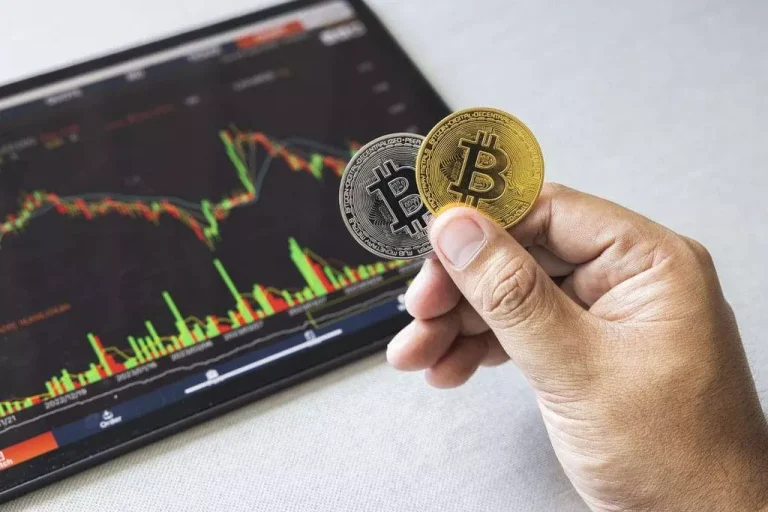Content
Cross-chain communication involves trade-offs in trust or flexibility that are unnecessary for interactions within a single blockchain. This means that achieving composability between smart contracts on different blockchains requires compromises in these areas, unlike composability within a single blockchain, which What is a Liquidity Bridge does not face these challenges. Cross chain bridges are handy because they let various cryptocurrencies work together, but whether they can connect depends on the networks and protocols they're made for. With different blockchain networks having their own technical needs, these bridges have to be flexible enough to handle specific cryptocurrencies and adjust to the unique environments of each blockchain. The integrity and security of cross-chain bridges are paramount due to the distinct programming and virtual environments of each blockchain network. Validators play a crucial role in verifying and validating locked and minted assets, ensuring transaction integrity.
The Challenges of Cross-Chain Bridging
Be sure to check that the data Digital asset center you choose is fully certified and compliant with regulatory requirements. Finally, a data center or hosting provider that can protect your infrastructure from DDoS attacks is a big plus too. This could be an oracle (centralized/or decentralized) or external validator for the bridging process. To understand how a blockchain bridge actually works, let’s see an example in which we are going to explore the process step by step.
Stepping in the era of cross-chain bridges
The abandonment of slippage might bring about imbalance of liquidity on the bridge. For instance, liquidity of USDT on Binance Smart Chain might be drained faster than ETH due to high demand of USDT usage on BSC. To balance the liquidity on the https://www.xcritical.com/ bridge, we promote arbitrage opportunities to incentivize people to balance the bridge.
Benefits and Advantages of Using a Liquidity Bridge
Since this scheme can work without failure only if the broker and the client have no conflicts of interest, and he will not lead against the trader. It is possible when client orders are automatically redirected to the bank supplying liquidity when the broker’s interest consists only of commission. In this context, there are two independent types of liquidity bridges, which find their application in Forex trading firms and other areas. If you are familiar with Forex trading, you have probably heard of the liquidity bridge. This innovative tool offers traders significant advantages by providing direct access to the international banking market through an electronic trading platform.

Without guaranteed finality, a reversed transaction on the source chain (such as a block reorganization) could have detrimental consequences on the destination chain, such as the creation of unbacked bridged tokens. While Buterin doesn't mention it in his recent posts, another criticism of bridges is the fees for using the bridge. And while you might save by using an exchange on another network, you need to consider the costs of bridging your assets. While these fees are often a set rate, some bridges also take a small percentage of the asset being bridged. Bridges also bring a solution to blockchain scalability, which has been a problem for a while. Polygon, a Layer 2 scaling solution for Ethereum, utilizes bridges to enable faster and cheaper transactions.

By employing these methods, cross-chain bridges ensure the secure and efficient transfer of assets, promoting greater interoperability within the blockchain ecosystem. Without a cross-chain bridge, transferring assets between different blockchain networks would be challenging, resulting in inefficient transactions and higher costs and longer transfer times. Moreover, as the Web3 ecosystem continues to develop, creating connections between existing Web2 infrastructures and emerging Web3 services becomes essential. Cross chain bridges are like helpers that make it easy to move assets and information between different blockchains. They work around the tricky parts of connecting these separate networks, making sure things can flow smoothly without any hiccups.
It’s important to note that in most cases, bridged tokens do not actually “leave” their source blockchain. DXtrade CFD provides brokers’ clients with trading on the go, real-time portfolio monitoring, market data streaming, risk management, and news. If the brokers use liquidity from several sources, some symbols might have multiple providers attached, and others might only have one or two.
CTrader is a leading multi-asset Forex and CFD trading platform, offering rich charting tools, advanced order types, level II pricing, and fast entry and execution. With the Liquidity Bridge, brokers are not limited to just one trading server. Instead, they can connect all their servers to a single liquidity management platform and configure all parameters in one place. Liquidity Bridge allows brokers to configure markup on the level of the liquidity management solution, sending to the trading platform already adjusted quotes. Blockchain bridges are powerful tools, but they also present potential security risks.
From the perspective of traders, core liquidity bridges have proven to be game-changers in terms of accessing global markets. One key advantage is the ability to trade multiple asset classes through a single platform, eliminating the need for multiple accounts and platforms. This streamlines the trading process and allows traders to seize opportunities across different markets more efficiently. When it comes to connecting traders to global markets, Core Liquidity Bridges play a crucial role in ensuring seamless access to liquidity across various financial instruments.
A liquidity bridge is a system that connects traders with multiple liquidity providers to ensure successful transactions through the trading platform. The use of Core Liquidity Bridges has revolutionized the trading industry, providing traders with seamless access to global markets. These bridges act as a connection between different liquidity providers and trading platforms, enabling traders to execute trades quickly and efficiently.

Market-makers can benefit from cross-chain arbitrage, while rebalancing liquidity across networks and allowing volumes to scale and maintaining cross-chain price equilibrium. With bridges, you easily move your tokens between chains, accessing new markets and opportunities. For instance, you could directly exchange your Avalanche-based tokens for Polygon-based tokens without going through a centralized exchange.
By keeping the asset on the source network “locked” the bridge mechanism ensures that there would be no double-spending. At the same time, in case the user wants to return and use the original tokens, the process is reversed - the destination chain assets are “burned” and the corresponding amount of assets is then unlocked back at the source chain. Pricing is arguably even more important, as liquidity bridges can range from affordable solutions to unreasonably pricey ones.
- Someone with Ether tokens may want to use them to buy NFTs or play games on the blockchain with lower gas or transaction fees than Ethereum, such as Solana.
- The main difference between liquidity bridges and gateways is their nature.
- Therefore, technically, any blockchain could be a layer 2 to any other chain but would only provide utility if it enhanced the user experience through faster and cheaper transactions.
- The mediator position between the market and trading platform gives bridge access to all information on processed trades.
- Integrating liquidity bridge APIs into your existing ecosystem should be easy, error-free and compatible with your digital workflow.
For example, if you have tokens on Arbitrum, another L2, you might use a bridge like RhinoFi to transfer them to Starknet. This unlocks the ability to use your Arbitrum tokens within the Starknet ecosystem. Bridges can be classified based on which kinds of networks they allow for transfers between. To simplify, let's assume you want to travel internationally, but you would like to drive your car on your holiday.
It's important to note that when the bridge is used from the side chain to the main chain, the token is instead burnt, and the original token is released on the main chain side instead of the process repeating. The solution also has some inbuilt risk management tools that may ensure the stable performance of the trading platform in case of technical issues with some liquidity providers. They verify transactions, maintain consensus between blockchains, and ensure the flow of assets. In decentralized bridges, validators often stake their own tokens as collateral, ensuring they act honestly. A blockchain bridge is a technology that allows for transferring information and assets (like cryptocurrencies or NFTs) between different blockchains. It acts as a translator or gateway connecting these separate blockchain ecosystems.
